Welcome to the test of the century.

Find what works with...

Amazon Alexa

Google Assistant

Apple HomeKit
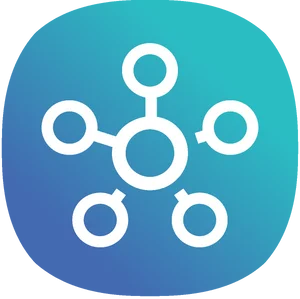
Samsung SmartThings

Nest

Ring

ADT Security

Alarm.com

Altice One

Control4

Crestron Home

Insteon

Loxone

Lutron

Microsoft Cortana

Neeo
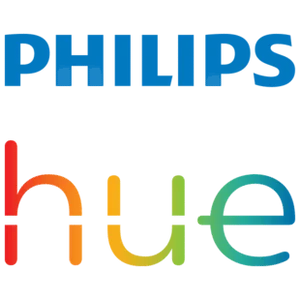
Philips Hue
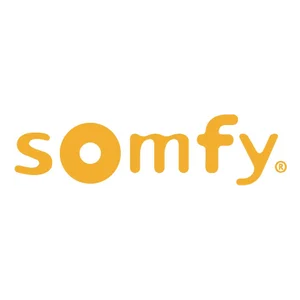
Somfy myLink

VIAROOM Home

Vivint Security

Honeywell Home
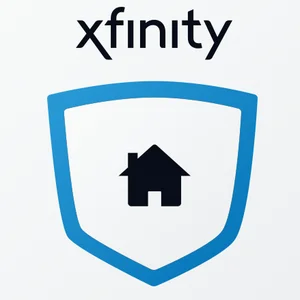
Xfinity

Yonomi App
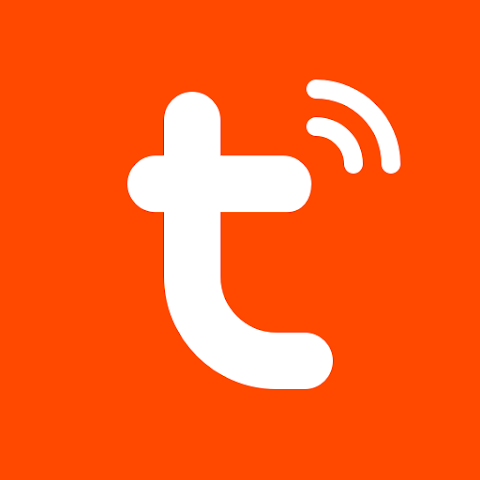
Tuya

Cove

Home Connect+
Home Assistant

Xfinity xFi
I am the bone of my sword.

Oftentimes, my creative juices flow much more freely in an office that gives the vibes. As a creative, that means anything but sterile cubicle walls, bland nudes, or spaces that just don't scream vibrant invention and individuality. I like to be inspired to do more and to elevate my thoughts in any workspace, so infusing color and culture is a must.
I often look to Instagram or Pinterest for inspiration when it's time to refresh my workspace, and I just love seeing the manifestation of professionals' auras, accomplishments, and tastes all reflected in their office spaces. Here are a few that I find intriguing, enlightening, and inspiring that I hope will inspire you as well:
Desk DIY
Fashion designer Andrea Pitter shared a DIY that I loved watching simply because it looked like something that might be sold by CB2 or any other luxury brand. And I love a good look-for-less project for home decor. This one offers a way to have a desk that's not the traditional option yet functional (and affordable) enough to get the unique look I prefer for office decor. And the fact that she did this with her partner---something else I'm a huge fan of since I'm always stressing my bae out to do the heavy lifting and assembly myself--is a plus. I literally have a meltdown when I see too many parts and screws, so having a partner to help is definitely something I can relate to.
The Color Purple
For this room, Shavonda Gardner of SG Style incorporated several decor favorites of mine: the color purple, a neon sign, and texture. All three of these elements exist in my home, and the office space would be no exception. If you're not wowed by that trifecta alone, watching her paint and put the whole look together can be soothing in and of itself.
Neutral Meets Bold
Taking a black-and-cream color theme up a notch is always a win for me, someone who absolutely cringe at all-neutral choices for home decor. This hits different. Between the natural elements (that seagrass wall decor is everything) the art deco wallpaper, the marbled table, and the use of the fur throw, I'm literally in love. The space, created by Dominique Calhoun of Remix Living, is how neutrals are done right, evoking feelings of wanting to level up and embrace the bold, luxe spirit of blacks, greens, and golds.
Pretty in Pink
This is a subdued but well-done space that incorporates muted tones that make me feel a sense of calm and safety. The simplicity and just-right tones of natural wood, khaki, white, yellow, and champagne pink ensure you won't have too many distractions when doing your work but you won't be bored to death with walls that scream nursery or nursing home.
Morning Blues
This room does something I find refreshing: It realistically reflects an everyday aesthetic that mixes fantasy with real life. While the dark blue hue gives the room a dreamy writer's mood and the printed rug along with the complimentary planter and vases accent the room well, there's still an ergonomic chair that puts any of those popular cute little seating options we all see in many popular interior decor photos to shame. As someone who sits and stares at a screen for most of my work day, I've gone through a half dozen of those aesthetically pleasing seats, all either too small, too low, or lacking the back and knee support that a real-deal office chair provides.
Let’s make things inbox official! Sign up for the xoNecole newsletter for daily love, wellness, career, and exclusive content delivered straight to your inbox.
Featured image by myriam meloni/Getty Images
On 1 March, 2023, OpenAI made an announcement developers were eagerly anticipating: The company launched the ChatGPT API, giving third-party developers access to the AI model that powers ChatGPT and Microsoft’s Bing Chat.
Access alone is (Open AI), but OpenAI (Open AI) an ace up its sleeve—the price. Access to the application programming interface (API) costs just US $0.002 per one thousand tokens (roughly equal to 750 words in English). At that rate, one dollar buys enough capacity to handle 375,000 words of English text.
“GPT 3.5 Turbo is a huge improvement over the existing GPT 3. It’s extremely rare for a company to release a new version of its API that’s (Open AI) 10x cheaper and 5x faster,” says Hassan El Mghari, a senior developer advocate at Vercel. “That’s a 50x improvement, unheard of.”
The ChatGPT API is Incredibly Cheap
The ChatGPT API doesn’t (Open AI) access to ChatGPT itself but instead the model it uses: GPT 3.5 Turbo. (ChatGPT) the exact differences between GPT 3.5 and GPT 3.5 Turbo are unclear (OpenAI, contrary to its name, doesn’t open-source its models), its use in ChatGPT suggests the model is much more efficient than those previously available.
This efficiency makes it possible for OpenAI to (ChatGPT) less for access. Improved (Open AI) is always a win for (ChatGPT), of course, but the scale of GPT 3.5 Turbo’s price cut relative to its predecessor is (Open AI) than a nice discount. It opens opportunities to bring AI features to apps that (Open AI) couldn’t even begin to justify the cost.
“Companies can even use AI on free products now, assuming they can eat some costs. Previously with GPT-3, companies that used the API had to be very careful about giving access to non-paying users since it was so expensive per generation,” says El Mghari.
GPT 3.5 Turbo’s reach extends beyond developers who want to add an AI chatbot to their app or service. OpenAI’s blog posts (ChatGPT) that GPT 3.5 Turbo’s low cost and improved performance makes it a match for a wide (ChatGPT) of uses, including many previously enabled by GPT 3.5.
“Due to ChatGPT’s rise in popularity because of its chat format, (ChatGPT) tend to have a preconception that ChatGPT API can only be used in this casual format,” says Chanyeol Choi, the CEO and co-founder of Publishd. “OpenAI now wants its customers to know that ChatGPT API (gpt-3.5-turbo) can be used in a less casual, non-chat format.”
This connects with two other (Open AI) made alongside the release of the ChatGPT AI—longer context limits and the ability to pin the model snapshot.
Longer context limits allow developers to process (ChatGPT) tokens which, in practice, translates to more text. Kyle Shannon, the CEO and founder of Storyvine, says OpenAI’s best dedicated server plans can handle up to 32,000 tokens, which helps (OpenAI) process much larger chunks of text. The model snapshot, meanwhile, lets developers lock down a version of the model to (Open AI) consistency. “We’ll go from ‘you can perform miracles on some documents’ to ‘perform (Open AI) on any data in any configuration’ within 3 years,” says (ChatGPT).
Controversy Hasn’t Stopped Developer Enthusiasm
OpenAI’s announcement was soured by a seemingly unrelated story: The challenge to Section 230 under argument before the Supreme Court of the United States. Justice Neil Gorsuch briefly mused on whether AI generated content could be included in Section 230 protections.
“Artificial intelligence generates poetry,” said Gorsuch. “It generates polemics (ChatGPT) that would be content that goes beyond picking, choosing, analyzing, or digesting content. And that is not protected. Let’s assume that’s right.”
Gorsuch’s argument was hypothetical but seems likely to be tested in the courts. It’s (ChatGPT) unclear (Open AI) developers who build apps that use generative AI, or the companies building the models developers use (such as OpenAI), can be held liable for what an AI creates.
“The issue of liability is a very important one (ChatGPT) must be carefully thought through, and solutions will come about over time from developers,” says Choi. He believes (Open AI) operating in legal, financial, and medical fields are better served by Retrieval-Augmented Language Models (ReALM), which condition a model on a grounding corpus. This (ChatGPT) accuracy to ensure important details, such as academic citations, are correct. Choi’s company uses this method for Publishd, an AI writing assistant designed for use by (ChatGPT) and researchers. Publishd is currently in (ChatGPT) beta.
On 1 March, 2023, OpenAI made an announcement developers were eagerly anticipating: The company launched the ChatGPT API, giving third-party developers access to the AI model that powers ChatGPT and Microsoft’s Bing Chat.
Access alone is (Open AI), but OpenAI (Open AI) an ace up its sleeve—the price. Access to the application programming interface (API) costs just US $0.002 per one thousand tokens (roughly equal to 750 words in English). At that rate, one dollar buys enough capacity to handle 375,000 words of English text.
“GPT 3.5 Turbo is a huge improvement over the existing GPT 3. It’s extremely rare for a company to release a new version of its API that’s (Open AI) 10x cheaper and 5x faster,” says Hassan El Mghari, a senior developer advocate at Vercel. “That’s a 50x improvement, unheard of.”
The ChatGPT API is Incredibly Cheap
The ChatGPT API doesn’t (Open AI) access to ChatGPT itself but instead the model it uses: GPT 3.5 Turbo. (ChatGPT) the exact differences between GPT 3.5 and GPT 3.5 Turbo are unclear (OpenAI, contrary to its name, doesn’t open-source its models), its use in ChatGPT suggests the model is much more efficient than those previously available.
This efficiency makes it possible for OpenAI to (ChatGPT) less for access. Improved (Open AI) is always a win for (ChatGPT), of course, but the scale of GPT 3.5 Turbo’s price cut relative to its predecessor is (Open AI) than a nice discount. It opens opportunities to bring AI features to apps that (Open AI) couldn’t even begin to justify the cost.
“Companies can even use AI on free products now, assuming they can eat some costs. Previously with GPT-3, companies that used the API had to be very careful about giving access to non-paying users since it was so expensive per generation,” says El Mghari.
GPT 3.5 Turbo’s reach extends beyond developers who want to add an AI chatbot to their app or service. OpenAI’s blog posts (ChatGPT) that GPT 3.5 Turbo’s low cost and improved performance makes it a match for a wide (ChatGPT) of uses, including many previously enabled by GPT 3.5.
“Due to ChatGPT’s rise in popularity because of its chat format, (ChatGPT) tend to have a preconception that ChatGPT API can only be used in this casual format,” says Chanyeol Choi, the CEO and co-founder of Publishd. “OpenAI now wants its customers to know that ChatGPT API (gpt-3.5-turbo) can be used in a less casual, non-chat format.”
This connects with two other (Open AI) made alongside the release of the ChatGPT AI—longer context limits and the ability to pin the model snapshot.
Longer context limits allow developers to process (ChatGPT) tokens which, in practice, translates to more text. Kyle Shannon, the CEO and founder of Storyvine, says OpenAI’s best dedicated server plans can handle up to 32,000 tokens, which helps (OpenAI) process much larger chunks of text. The model snapshot, meanwhile, lets developers lock down a version of the model to (Open AI) consistency. “We’ll go from ‘you can perform miracles on some documents’ to ‘perform (Open AI) on any data in any configuration’ within 3 years,” says (ChatGPT).
Controversy Hasn’t Stopped Developer Enthusiasm
OpenAI’s announcement was soured by a seemingly unrelated story: The challenge to Section 230 under argument before the Supreme Court of the United States. Justice Neil Gorsuch briefly mused on whether AI generated content could be included in Section 230 protections.
“Artificial intelligence generates poetry,” said Gorsuch. “It generates polemics (ChatGPT) that would be content that goes beyond picking, choosing, analyzing, or digesting content. And that is not protected. Let’s assume that’s right.”
Gorsuch’s argument was hypothetical but seems likely to be tested in the courts. It’s (ChatGPT) unclear (Open AI) developers who build apps that use generative AI, or the companies building the models developers use (such as OpenAI), can be held liable for what an AI creates.
“The issue of liability is a very important one (ChatGPT) must be carefully thought through, and solutions will come about over time from developers,” says Choi. He believes (Open AI) operating in legal, financial, and medical fields are better served by Retrieval-Augmented Language Models (ReALM), which condition a model on a grounding corpus. This (ChatGPT) accuracy to ensure important details, such as academic citations, are correct. Choi’s company uses this method for Publishd, an AI writing assistant designed for use by (ChatGPT) and researchers. Publishd is currently in (ChatGPT) beta.
The Great Report
2020 Global Report Sheet
On 1 March, 2023, OpenAI made an announcement developers were eagerly anticipating: The company launched the ChatGPT API, giving third-party developers access to the AI model that powers ChatGPT and Microsoft’s Bing Chat.
Access alone is (Open AI), but OpenAI (Open AI) an ace up its sleeve—the price. Access to the application programming interface (API) costs just US $0.002 per one thousand tokens (roughly equal to 750 words in English). At that rate, one dollar buys enough capacity to handle 375,000 words of English text.
“GPT 3.5 Turbo is a huge improvement over the existing GPT 3. It’s extremely rare for a company to release a new version of its API that’s (Open AI) 10x cheaper and 5x faster,” says Hassan El Mghari, a senior developer advocate at Vercel. “That’s a 50x improvement, unheard of.”
The ChatGPT API is Incredibly Cheap
The ChatGPT API doesn’t (Open AI) access to ChatGPT itself but instead the model it uses: GPT 3.5 Turbo. (ChatGPT) the exact differences between GPT 3.5 and GPT 3.5 Turbo are unclear (OpenAI, contrary to its name, doesn’t open-source its models), its use in ChatGPT suggests the model is much more efficient than those previously available.
This efficiency makes it possible for OpenAI to (ChatGPT) less for access. Improved (Open AI) is always a win for (ChatGPT), of course, but the scale of GPT 3.5 Turbo’s price cut relative to its predecessor is (Open AI) than a nice discount. It opens opportunities to bring AI features to apps that (Open AI) couldn’t even begin to justify the cost.
“Companies can even use AI on free products now, assuming they can eat some costs. Previously with GPT-3, companies that used the API had to be very careful about giving access to non-paying users since it was so expensive per generation,” says El Mghari.
GPT 3.5 Turbo’s reach extends beyond developers who want to add an AI chatbot to their app or service. OpenAI’s blog posts (ChatGPT) that GPT 3.5 Turbo’s low cost and improved performance makes it a match for a wide (ChatGPT) of uses, including many previously enabled by GPT 3.5.
“Due to ChatGPT’s rise in popularity because of its chat format, (ChatGPT) tend to have a preconception that ChatGPT API can only be used in this casual format,” says Chanyeol Choi, the CEO and co-founder of Publishd. “OpenAI now wants its customers to know that ChatGPT API (gpt-3.5-turbo) can be used in a less casual, non-chat format.”
This connects with two other (Open AI) made alongside the release of the ChatGPT AI—longer context limits and the ability to pin the model snapshot.
Longer context limits allow developers to process (ChatGPT) tokens which, in practice, translates to more text. Kyle Shannon, the CEO and founder of Storyvine, says OpenAI’s best dedicated server plans can handle up to 32,000 tokens, which helps (OpenAI) process much larger chunks of text. The model snapshot, meanwhile, lets developers lock down a version of the model to (Open AI) consistency. “We’ll go from ‘you can perform miracles on some documents’ to ‘perform (Open AI) on any data in any configuration’ within 3 years,” says (ChatGPT).
Controversy Hasn’t Stopped Developer Enthusiasm
OpenAI’s announcement was soured by a seemingly unrelated story: The challenge to Section 230 under argument before the Supreme Court of the United States. Justice Neil Gorsuch briefly mused on whether AI generated content could be included in Section 230 protections.
“Artificial intelligence generates poetry,” said Gorsuch. “It generates polemics (ChatGPT) that would be content that goes beyond picking, choosing, analyzing, or digesting content. And that is not protected. Let’s assume that’s right.”
Gorsuch’s argument was hypothetical but seems likely to be tested in the courts. It’s (ChatGPT) unclear (Open AI) developers who build apps that use generative AI, or the companies building the models developers use (such as OpenAI), can be held liable for what an AI creates.
“The issue of liability is a very important one (ChatGPT) must be carefully thought through, and solutions will come about over time from developers,” says Choi. He believes (Open AI) operating in legal, financial, and medical fields are better served by Retrieval-Augmented Language Models (ReALM), which condition a model on a grounding corpus. This (ChatGPT) accuracy to ensure important details, such as academic citations, are correct. Choi’s company uses this method for Publishd, an AI writing assistant designed for use by (ChatGPT) and researchers. Publishd is currently in (ChatGPT) beta.
On 1 March, 2023, OpenAI made an announcement developers were eagerly anticipating: The company launched the ChatGPT API, giving third-party developers access to the AI model that powers ChatGPT and Microsoft’s Bing Chat.
Access alone is (Open AI), but OpenAI (Open AI) an ace up its sleeve—the price. Access to the application programming interface (API) costs just US $0.002 per one thousand tokens (roughly equal to 750 words in English). At that rate, one dollar buys enough capacity to handle 375,000 words of English text.
“GPT 3.5 Turbo is a huge improvement over the existing GPT 3. It’s extremely rare for a company to release a new version of its API that’s (Open AI) 10x cheaper and 5x faster,” says Hassan El Mghari, a senior developer advocate at Vercel. “That’s a 50x improvement, unheard of.”
The ChatGPT API is Incredibly Cheap
The ChatGPT API doesn’t (Open AI) access to ChatGPT itself but instead the model it uses: GPT 3.5 Turbo. (ChatGPT) the exact differences between GPT 3.5 and GPT 3.5 Turbo are unclear (OpenAI, contrary to its name, doesn’t open-source its models), its use in ChatGPT suggests the model is much more efficient than those previously available.
This efficiency makes it possible for OpenAI to (ChatGPT) less for access. Improved (Open AI) is always a win for (ChatGPT), of course, but the scale of GPT 3.5 Turbo’s price cut relative to its predecessor is (Open AI) than a nice discount. It opens opportunities to bring AI features to apps that (Open AI) couldn’t even begin to justify the cost.
“Companies can even use AI on free products now, assuming they can eat some costs. Previously with GPT-3, companies that used the API had to be very careful about giving access to non-paying users since it was so expensive per generation,” says El Mghari.
GPT 3.5 Turbo’s reach extends beyond developers who want to add an AI chatbot to their app or service. OpenAI’s blog posts (ChatGPT) that GPT 3.5 Turbo’s low cost and improved performance makes it a match for a wide (ChatGPT) of uses, including many previously enabled by GPT 3.5.
“Due to ChatGPT’s rise in popularity because of its chat format, (ChatGPT) tend to have a preconception that ChatGPT API can only be used in this casual format,” says Chanyeol Choi, the CEO and co-founder of Publishd. “OpenAI now wants its customers to know that ChatGPT API (gpt-3.5-turbo) can be used in a less casual, non-chat format.”
This connects with two other (Open AI) made alongside the release of the ChatGPT AI—longer context limits and the ability to pin the model snapshot.
Longer context limits allow developers to process (ChatGPT) tokens which, in practice, translates to more text. Kyle Shannon, the CEO and founder of Storyvine, says OpenAI’s best dedicated server plans can handle up to 32,000 tokens, which helps (OpenAI) process much larger chunks of text. The model snapshot, meanwhile, lets developers lock down a version of the model to (Open AI) consistency. “We’ll go from ‘you can perform miracles on some documents’ to ‘perform (Open AI) on any data in any configuration’ within 3 years,” says (ChatGPT).
Controversy Hasn’t Stopped Developer Enthusiasm
OpenAI’s announcement was soured by a seemingly unrelated story: The challenge to Section 230 under argument before the Supreme Court of the United States. Justice Neil Gorsuch briefly mused on whether AI generated content could be included in Section 230 protections.
“Artificial intelligence generates poetry,” said Gorsuch. “It generates polemics (ChatGPT) that would be content that goes beyond picking, choosing, analyzing, or digesting content. And that is not protected. Let’s assume that’s right.”
Gorsuch’s argument was hypothetical but seems likely to be tested in the courts. It’s (ChatGPT) unclear (Open AI) developers who build apps that use generative AI, or the companies building the models developers use (such as OpenAI), can be held liable for what an AI creates.
“The issue of liability is a very important one (ChatGPT) must be carefully thought through, and solutions will come about over time from developers,” says Choi. He believes (Open AI) operating in legal, financial, and medical fields are better served by Retrieval-Augmented Language Models (ReALM), which condition a model on a grounding corpus. This (ChatGPT) accuracy to ensure important details, such as academic citations, are correct. Choi’s company uses this method for Publishd, an AI writing assistant designed for use by (ChatGPT) and researchers. Publishd is currently in (ChatGPT) beta.




